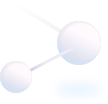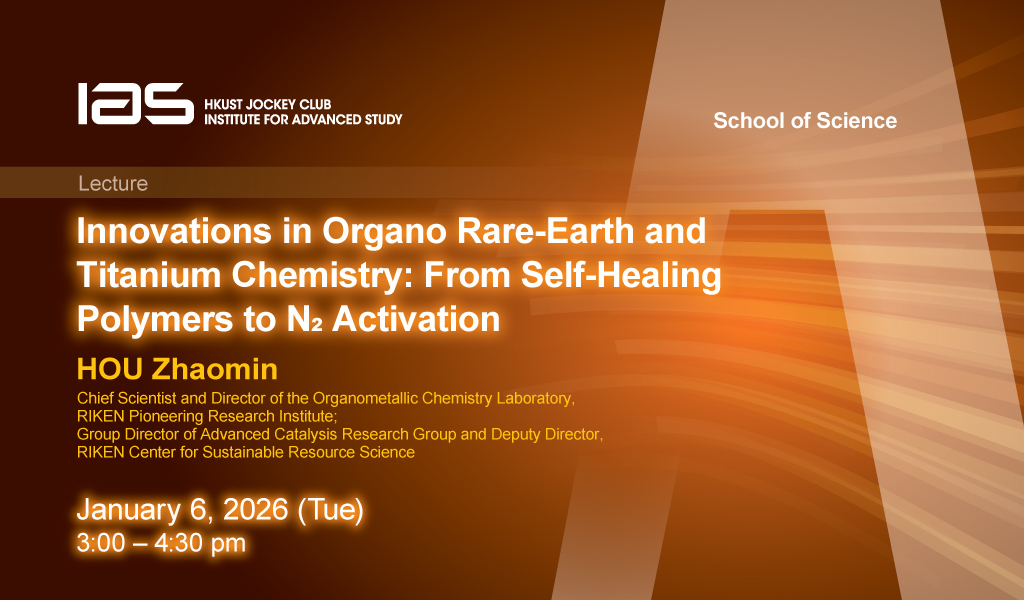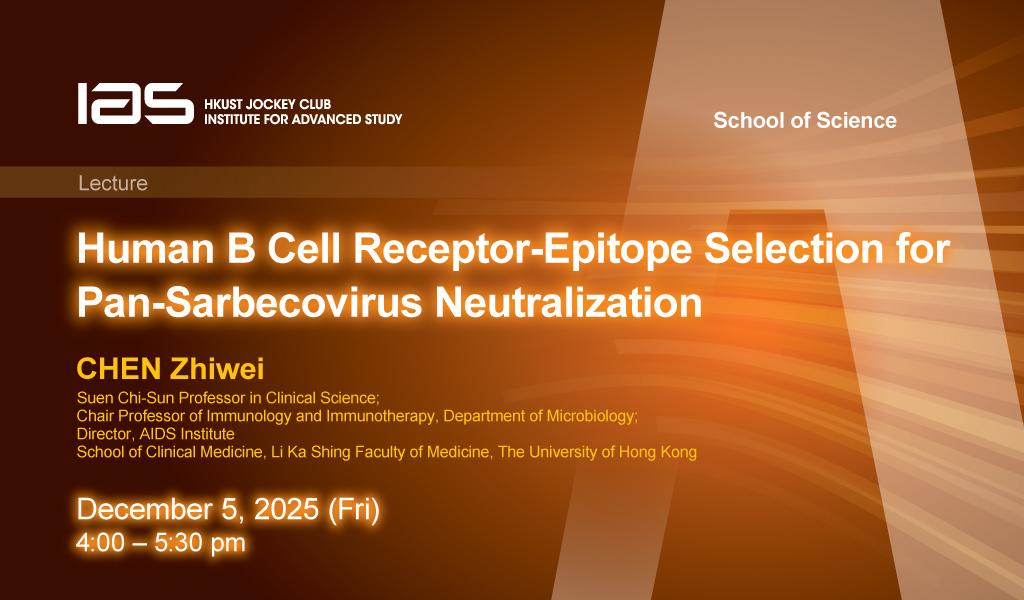Speaker: Professor Xiang David LI
Institution: Department of Chemistry, The University of Hong Kong
Hosted By: Professor Yong HUANG
Abstract
The hereditary blueprint of a eukaryotic cell is encoded in its genomic DNA that is tightly compacted into chromatin together with histone proteins. Histones are extensively decorated by a variety of posttranslational modifications (PTMs, e.g., methylation, acetylation, ubiquitylation, phosphorylation, etc.), serving as one of the cellular mechanisms that regulates DNA-templated processes, including but not limited to gene transcription, DNA replication, and DNA damage repair. Most of the histone PTMs exist in dynamic fluctuations, and their on and off states are exquisitely regulated by enzymes known as “writers” and “erasers”, respectively. When installed at certain sites, histone PTMs can change the local physicochemical environment and thereby directly influence the nucleosome and chromatin structures. Alternatively, histone PTMs can recruit effectors (or “readers”) to signal the downstream events. A “histone code” hypothesis has been proposed in which the combinatory actions of different histone PTMs orchestrate the epigenetic landscape of cells, modulating the activity of the underlying DNA and maintaining the genome stability between generations. Accumulating evidence also suggests that malfunctions of histone PTMs are associated with the pathogenesis of human diseases, such as cancer. It is therefore important to fully decipher the histone code, namely, to dissect the regulatory mechanisms and biological functions of histone PTMs.
To unravel the roles played by these PTMs in histone code, key questions that have driven our study are (i) how to detect the novel histone PTMs; (ii) how to identify the enzymes that catalyze the addition (writers) and removal (erasers) of the histone PTMs along with the regulating mechanisms; (iii) what is the biological significance of the histone PTMs and how do they function, by affecting the nucleosome and chromatin dynamics or by recruiting readers; and (iv) how to develop chemical probes to interrogate the histone PTMs or even serve as potential leads for the drug discovery campaigns to treat diseases caused by abnormalities in the regulation of histone PTMs.
This talk will focus on our efforts in developing and applying chemical tools and methods to answer the above questions. Specifically, I will discuss the detection of negatively charged histone acylations by developing and applying chemical reporters; preparing homogeneous nucleosomes carrying negatively charged acylations by protein chemistry approaches and the in vitro biophysical analyses of the effects of the acylations on nucleosome structures; identifying and characterizing protein–protein interactions (PPIs) mediated by histone PTMs in different biological contexts (i.e., to identify the readers and erasers) by establishing a chemical proteomics platform that is enabled by photo-cross-linking chemistry and quantitative proteomics strategies; and manipulating PTM-mediated PPIs by the structure-guided design of inhibitors.
About the speaker
Prof. Xiang David Li obtained his B.Sc. degree from Fudan University in 2003. He moved to Hong Kong and received his Ph.D. in organic and bioorganic chemistry in 2008 under the supervision of Prof. Dan Yang at The University of Hong Kong. He moved to New York to conduct his postdoctoral training in chemical biology with Prof. Tarun M. Kapoor at The Rockefeller University. In 2011, he returned to The University of Hong Kong and started his independent career as an Assistant Professor at the Department of Chemistry. He was promoted to Associate Professor in 2017 and Full Professor in 2020. Research in Prof Li’s laboratory is at the interface of chemistry and biology with focus on developing chemical approaches to address key questions in epigenetics.



